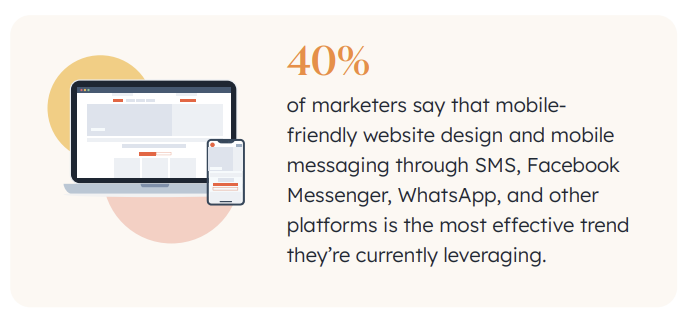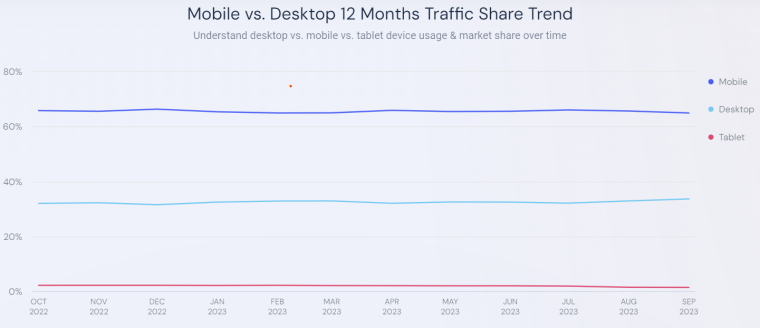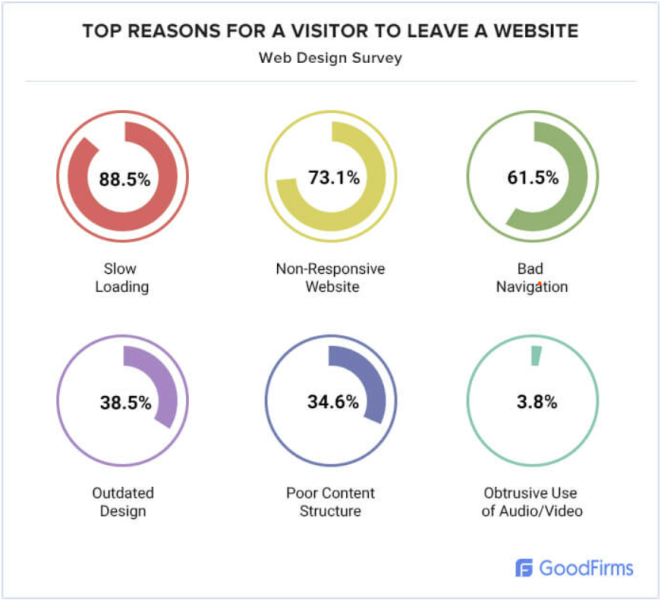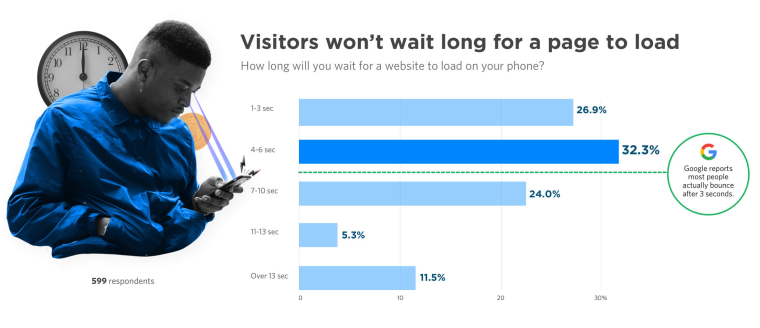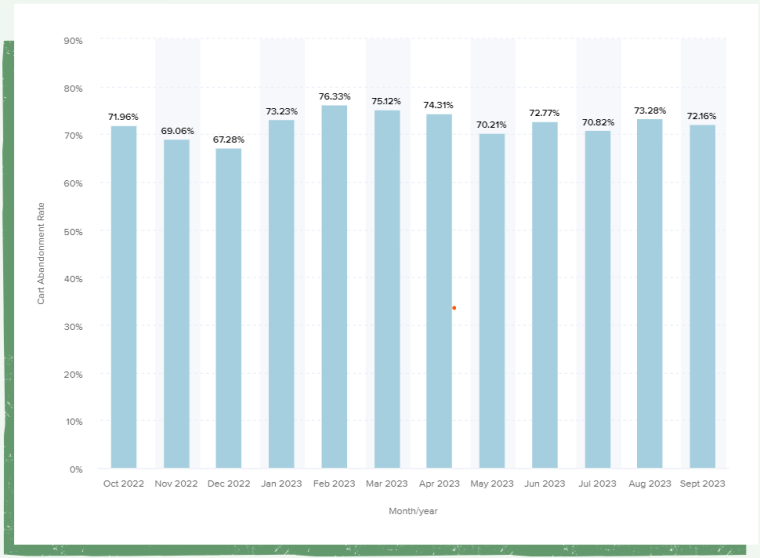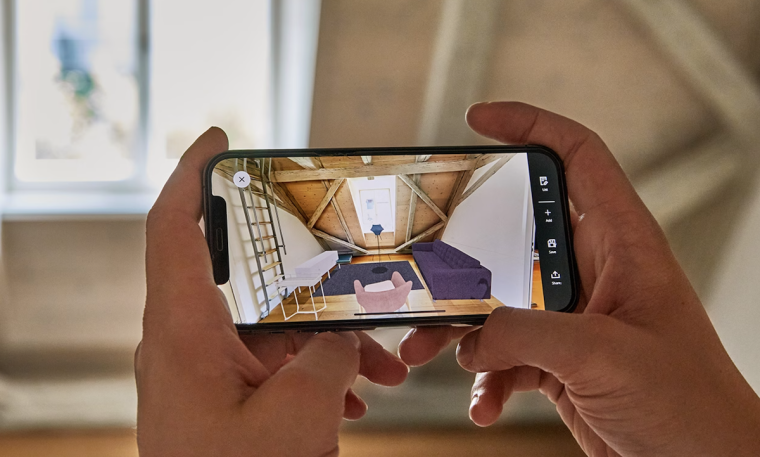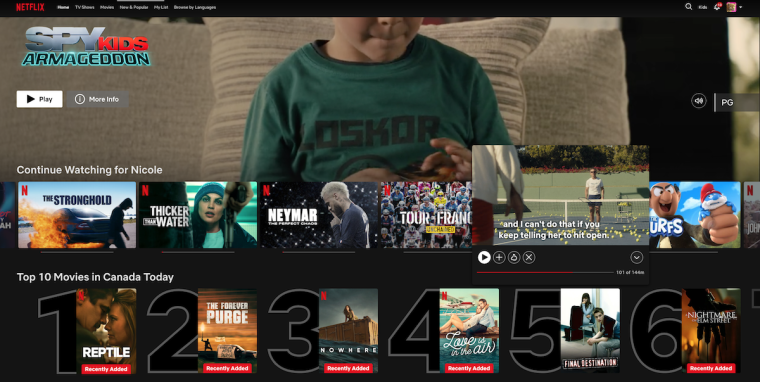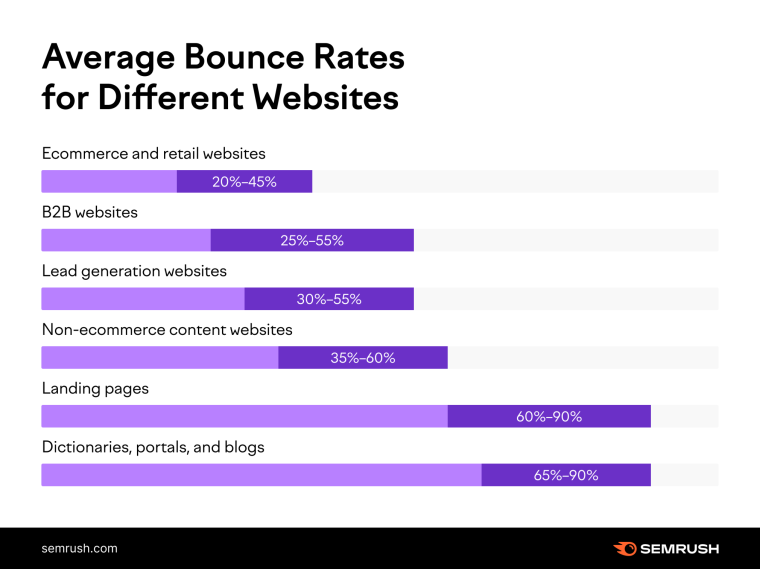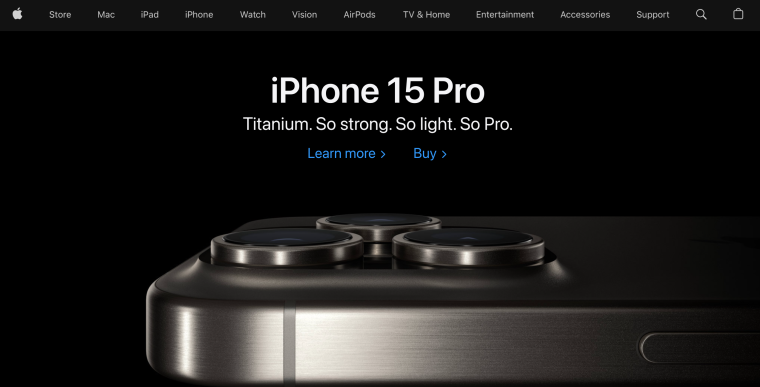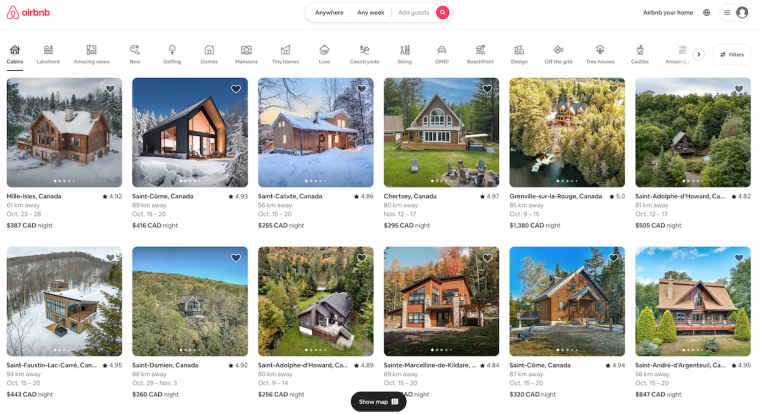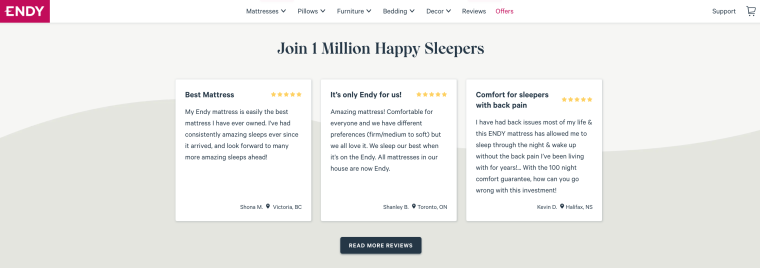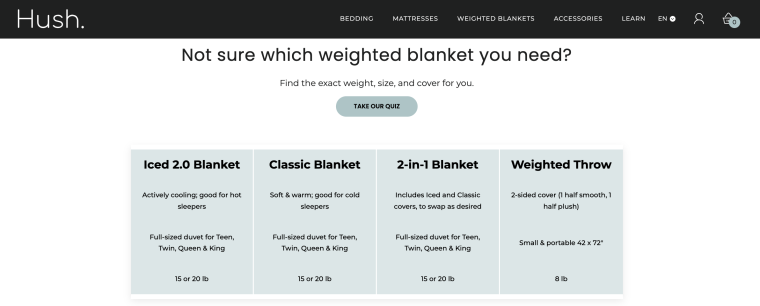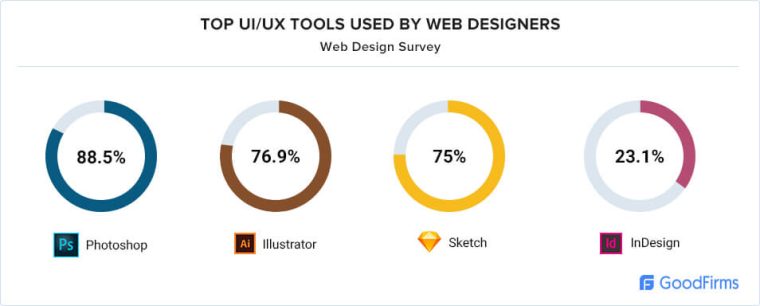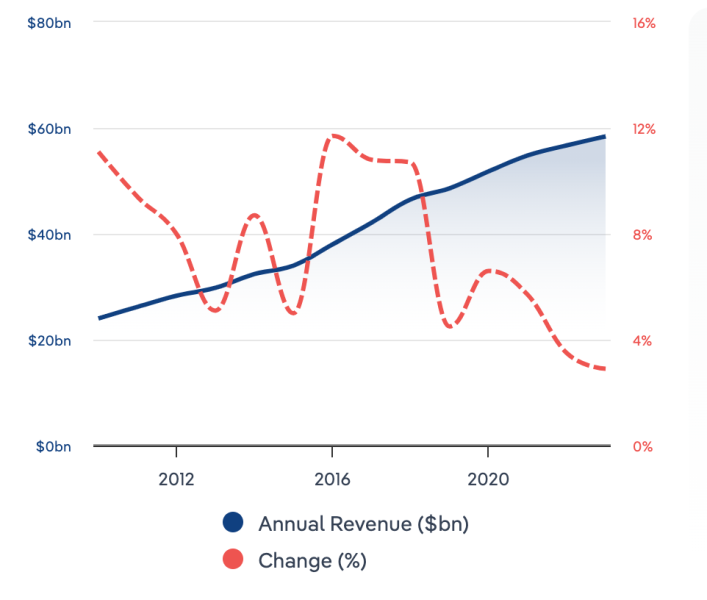Your website is often the first point of contact between your business and potential customers. It isn’t just a URL; it’s your brand’s first impression, a virtual storefront, and a crucial business asset. Whether you’re a business owner, SEO specialist, web developer, graphic designer, or marketer, knowing the latest web design statistics can help build a site to captivate your audience.
But fear not, we have taken on the task of curating and compiling the many scattered web design statistics from reputable sources around the web. We’ve simplified the process, bringing you a comprehensive breakdown of the insights you need to transform your online presence into something extraordinary. Let’s dive into the data-driven world of web design together.
Web Design Stats Highlights
- 33% of marketers incorporate mobile-friendly website design into their marketing strategies.
- Slow website loading speeds cause nearly 9 in 10 people to abandon a site.
- A 0.1-second speed improvement in an e-commerce site can increase average order value by 9.2%.
- A well-crafted UI by web designers can boost website conversion rates by up to 200%.
Mobile Web Design Statistics
Mobile devices have seamlessly integrated into the daily routines of billions of people. From smartphones to tablets, these web-enabled gadgets have transformed into indispensable companions, serving as vital instruments for communication, information, and entertainment for individuals of all generations.
Based on HubSpot’s research findings, approximately 33% of marketers incorporate mobile-friendly website design into their marketing strategies. The integration of mobile-friendly websites and design into marketing strategies is motivated by several compelling reasons:
- Enhanced user experience
- Improved SEO
- Wider reach
- Higher conversion rates
- Lower bounce rates
- Positive brand image
Mobile Usage Statistics
There were 5 billion unique mobile internet users in 2022. Mobile devices have consistently contributed to around 50% of the world’s web traffic. During the first quarter of 2023, mobile traffic accounted for 58.33% of global website traffic, according to data from Simillarweb. This maintained a steady presence above the 50% threshold, a trend that was initially crossed in 2020 and began in early 2017.
In 2022, it was found that 93.6% of the population in the US used a mobile device to access the internet. According to a global mobile internet user penetration rate survey by Statista, Bahrain secured the top spot with a mobile internet penetration of roughly 98%, while the United Arab Emirates closely followed with a mobile internet penetration rate of nearly 95.8%
Furthermore, between 2024 and 2028, a surge in mobile internet usage is expected, with an estimated addition of 219 million global users. The number of users is expected to reach 6.7 billion individuals by 2028.
Global internet users allocated 57% of their online time to browsing via mobile phones in Q1 2023. This is a 3% increase compared to Q4 2021 when about 54% of internet users primarily used mobile devices. Furthermore, the growth in mobile internet usage has been consistent since the Q3 of 2013 and has continued into early 2023.
Mobile vs Desktop Usage
As of 2023, mobile usage has surpassed desktop usage, with more people relying on smartphones and tablets to access online content.
Data on ‘mobile vs desktop’ usage by Similar Web shows that more than 65% of website traffic comes from mobile devices.
- 65.67% of website traffic is driven by mobile users
- 32.89% of website traffic is driven by desktop users
This shift has profound implications for web designers and developers, necessitating a focus on responsive and mobile-friendly design for a brand’s mobile site.
Google’s Mobile-First Shift
According to Google, optimizing a website for mobile devices can lead to improved mobile rankings. Key ranking factors in this context encompass mobile page load speed, button sizes, and other mobile-specific considerations.
The concept of a mobile-first internet can be traced back to Google’s pivotal move towards mobile-first indexing in March 2018.
According to Google, there are three configurations you can choose from to create a mobile-friendly site:
- Responsive design
- Dynamic serving
- Separate URLs
Google emphasizes maintaining consistent content across desktop and mobile sites.
While optimizing the design for mobile, such as using accordions or tabs to enhance user experience, it’s crucial to ensure content equivalence between the mobile and desktop versions, as most indexing relies on the mobile site.
User Preferences for Mobile Design
Websites designed for mobile-friendliness have the power to transform users into customers.
Back in 2012, Google reported that 67% of mobile users are more inclined to make a purchase when they visit a mobile-friendly website and 74% of mobile users are more likely to return to that site in the future if it is mobile-friendly. While this was a long time ago, the trend is likely to have only been upwards since.
Mobile design has a huge impact on consumer engagement. In 2022, mobile apps generated $1.11 billion worldwide.
Understanding how users perceive and interact with mobiles is vital. Users appreciate the convenience and accessibility of mobile browsing, valuing the ability to access information on the go.
According to digital design experts, mobile users expect certain elements to be paramount for their satisfaction, namely:
- Speed
- Ease of navigation
- Responsive layouts
Using a mobile-first approach, it’s important to create websites that adapt seamlessly to various screen sizes, achieved through a unified codebase.
For example, a survey conducted by Goodfirms found that 73.1% of respondents expressed concern over the absence of responsive website design across various devices.
According to HubSpot, elements of a bad mobile web design that can cause users to leave a website include:
- Crowded web design
- Outdated design
- Lack of color contrast
- Inconsistent typefaces
- Hidden navigation menu and navigational links
Speed and Mobile Optimization Web Design Statistics
HubSpot research in 2023 revealed that 50.3% of marketers utilize mobile optimization as a key component of their SEO strategies. Furthermore, 45.4% identify it as the most effective strategy for achieving high rankings on search engine results pages.
According to UX designers, mobile speed is heavily influenced by various aspects of web design, including:
- Excessive large images and media files can slow down mobile loading times.
- Complex and unoptimized code can hinder mobile website performance.
- A non-responsive design may lead to usability issues on mobile devices.
- Excessive use of external resources or third-party scripts can increase loading times.
- Poorly structured or bloated web pages can impact mobile speed.
Website Speed Statistics
A website’s sluggish loading speed stands as the primary factor that prompts visitors to abandon it.
According to a 2023 Goodfirms survey, 88.5% of respondents agreed that slow loading times serve as the primary reason for website visitors’ departures. This underscores the importance of web design and speed optimization.
Based on findings included in Tool Tester’s 2023 analysis of the top 100 web pages worldwide, web pages typically load in approximately 2.5 seconds on desktop devices. This responsiveness is reflected in users’ behavior, as those on desktops tend to have the highest average pages per session, totaling 3.4.
Furthermore, when it comes to retail sites, desktop users shine even brighter, achieving an average of 5.01 pages per session, which is the highest among the 23 industries analyzed in Tool Tester’s report. Despite this, desktop users do experience a moderate average bounce rate of 50%, suggesting there’s room for further optimization in retaining their engagement.
Impacts of Low Website Speed
A poorly performing website with a low website speed can lead to a range of negative consequences, including:
- High bounce rates
- Loss of customers
- Reduced search engine rankings
- Negative user experience
- Higher operating costs
70% of consumers recognize that page speed plays a crucial role in influencing their decision to make a purchase. Furthermore:
- 45.4% of consumers are less likely to make a purchase non a slow site
- 36.8% are less likely to return to a slow website
- 11.9% are likely to tell a friend about a slow site
More than 50% of website visitors are willing to sacrifice animations and videos if it leads to faster loading speeds. Furthermore, almost 25% of website visitors are willing to give up images if it means that a website would load faster.
Bounce Rates and Website Speed Statistics
According to SaaS experts at SEMRush, a bounce rate of 40% or less is typically seen as favorable, signifying good user engagement. Conversely, a bounce rate exceeding 60% is often regarded as high, suggesting a potential need for enhancements to engage visitors.
As per Unbounce’s page speed report, 32.3% of consumers are inclined to abandon a website that fails to load correctly within a 4-6 second timeframe. However, Google indicates that consumers tend to exit a website page if the loading time exceeds the 3-second mark.
Web Design Statistics Broken Down By Industry
Website design requirements vary significantly across industries as user expectations for speed, content, navigation, and aesthetics differ based on the type of website.
An ecommerce site demands seamless navigation and quick load times to facilitate product exploration and purchases, while a news website prioritizes fast access to breaking stories and user-friendly article layouts, for example.
Ecommerce Web Design Statistics
In 2022, ecommerce sites generated almost 19% of global retail sales. Statista projections suggest that by 2027, online sales will comprise nearly 25% of the total global retail market.
The Milliseconds Make Millions study conducted by Deloitte on behalf of Google in 2020 uncovered that even a slight 0.1-second enhancement in the speed of ecommerce sites led to improvements in user engagement and conversion results. Specifically:
- Retail consumer conversions increased by 8.4%.
- The average order value went up by 9.2%.
Retail shoppers were particularly sensitive to speed before checkout, with:
- 5.7% fewer bounces on product listing pages.
- 5.2% rise in overall retail customer engagement.
In the e-commerce industry, consumers are most sensitive to speed during the pre-checkout stage of their journey, where delays have a significant impact. Consumers displayed the highest sensitivity to speed when moving from product detail pages to adding items to their shopping carts.
Based on a report by Dynamic Yield the global cart abandonment rate on ecommerce websites stood at 72.16% in September 2023. Furthermore, 21% of carts are abandoned due to long or complicated checkout processes on an ecommerce website.
Technology for E-Commerce Website Design
According to industry experts, ecommerce enterprises should invest in technology and tools such as 3D modeling software and high-quality cameras for creating interactive product visuals.
Interactive visuals enhance e-commerce website experiences by allowing customers to explore products in further detail. For example, they can view items from multiple angles, zoom in for finer details, and even watch 360-degree videos illustrating the products in action.
For example, IKEA’s AI-powered tool allows users to browse products in real-life settings.
In June 2023 IKEA Canada launched Kreativ, an interactive visual tool that allows customers to seamlessly integrate design solutions and envision them in their own living spaces.
Web Design in Entertainment & News
Web design in the entertainment and news industry focuses on creating immersive and engaging user experiences. Many entertainment and news websites employ dynamic layouts to prominently feature both their latest content and personalized recommendations.
The use of dynamic content in web design is central to the success of streaming providers. It keeps users continuously engaged, encourages content discovery, and enhances overall user satisfaction.
For example, Netflix employs a range of web design strategies with dynamic content to enhance user personalization and streamline content discovery, including:
- User profiles for tailored experiences
- Dynamic homepage recommendations
- Dynamic thumbnails for quick content assessment
- Auto-play previews for decision-making
Seamless integration of recommendation algorithms
Bounce Rates by Industry
Each business and industry can exhibit different bounce rates. This is primarily due to factors such as user intent, content relevance, and website design, which interact differently within each industry’s unique context.
For example, a high bounce rate for a B2B website is above 55%, but above 90% on blogs.
UI/UX Web Design Statistics
Good UI/UX web design can have a significant impact on the success of a website. It encompasses various aspects of user interaction and experience, shaping how visitors perceive, engage with, and navigate a website.
With a proper UI/UX web design strategy, businesses can not only prevent visitors from leaving a website but also engage them effectively and encourage longer stays.
User Interface (UI) Web Design Statistics
According to Forrester’s Research, a well-crafted user interface (UI) by web designers can potentially increase website conversion rates by up to 200%.
By implementing UI web design best practices, you can create an interface that not only looks visually appealing but also enhances user engagement, fosters trust, and ultimately leads to a more successful website.
One notable brand renowned for its outstanding UI design is Apple. The brand is known for its exceptional UI design across its product range, including the iPhone, iPad, Mac, and various software applications. Their design philosophy emphasizes simplicity, clarity, and intuitiveness.
Strategies for Effective UI Web Design
Experts in the web design services industry have offered valuable insights into best practices for creating effective UI web designs:
- Use simple and clear design elements
- Stay consistent in design elements and navigation across the entire website
- Focus on mobile responsiveness
- Utilize whitespace effectively to create breathing room between elements
- Design call-to-action (CTA) buttons
- Choose readable fonts and font sizes
- Incorporate images and icons that complement the content
- Optimize images and code for fast page loading times
- Test the website across various browsers
- Experiment with different UI elements and layouts through A/B testing
Conversion Rate Optimization (CRO) through User Experience (UX)
Conversion rate optimization (CRO) involves making strategic improvements to a website with the primary goal of increasing the percentage of visitors who take your desired action. According to Ruler Analytics, the average conversion rate across industries sits at 2.9%. Companies that devote significant time and effort into CRO usually exceed the average.
One of the key ways to achieve CRO is by focusing on UX. Effective UX design guarantees that no matter where website visitors arrive, they encounter compelling messaging, easy navigation, and pertinent content that guides them through the sales funnel effectively.
Take Airbnb, for instance; it’s renowned for its outstanding UX design, granting users a smooth and enjoyable booking experience, complete with a glimpse of available rentals even before they initiate their search.
UX Design Strategies Used by Website Designers
Incorporating reviews and social proofs in a site’s web design is a powerful UX strategy to employ in web design.
In fact, somewhere between 88% and 99% of consumers worldwide check out reviews when they’re scouting a purchase. This not only underscores the significance of reviews but also highlights the remarkable trust and confidence that buyers place in the experiences and insights of their peers.
Placing a CTA button on the post-purchase page can drive conversions. If a post-purchase page includes a CTA that encourages it, customers become 16 times more inclined to share their purchase on social media. This presents a fantastic opportunity for business owners to inspire customers to spread the word about their experience.
UI/UX tools empower web designers and developers to craft distinctive websites. According to Goodfirm’s survey, Adobe Software tools stand out as the preferred choice among web designers.
Web Design Employment Statistics
The US Bureau of Labor Statistics anticipates a 16% growth in employment of web developers and digital designers from 2022 to 2032, surpassing the average growth rate across all occupations.
An average of approximately 19,000 job opportunities for web developers and designers are expected annually over the course of the decade to 2032. A significant portion of these openings in the web design services industry is anticipated to arise from the necessity to replace workers who transition to alternative professions or retire from the workforce.
Salaries in the Web Design Industry
In May 2022, the median annual wage for web and digital designers was $83,240, while web developers had a median annual wage of $78,580.
The median annual wage of website designers surpassed the median weekly income of full-time workers in the United States in 2022.
The Future of Web Design
The web design services industry in the US has experienced an annual growth rate of 6.2% between 2017 and 2022 when considering market size. In 2022, the industry’s revenue reached $56.7 billion in market size, illustrating the significant economic impact and scale of this sector.
With advancements in technology, user expectations, and design trends, web designers are facing a dynamic and challenging field.
One of the key trends shaping the future of web design is the emphasis on user experience (UX) and user interface (UI) design.
Websites need to be not only visually appealing but also highly functional and user-friendly to engage and retain visitors. Responsive and mobile-first design principles continue to be crucial, as more users access the web through various devices.
Additionally, the integration of AI and machine learning into web design processes promises to personalize user experiences, streamline content delivery, and improve website performance.
As we move forward, web designers will need to stay adaptable, continuously update their skills, and embrace emerging technologies to create web experiences that meet the ever-evolving demands of the digital world.

